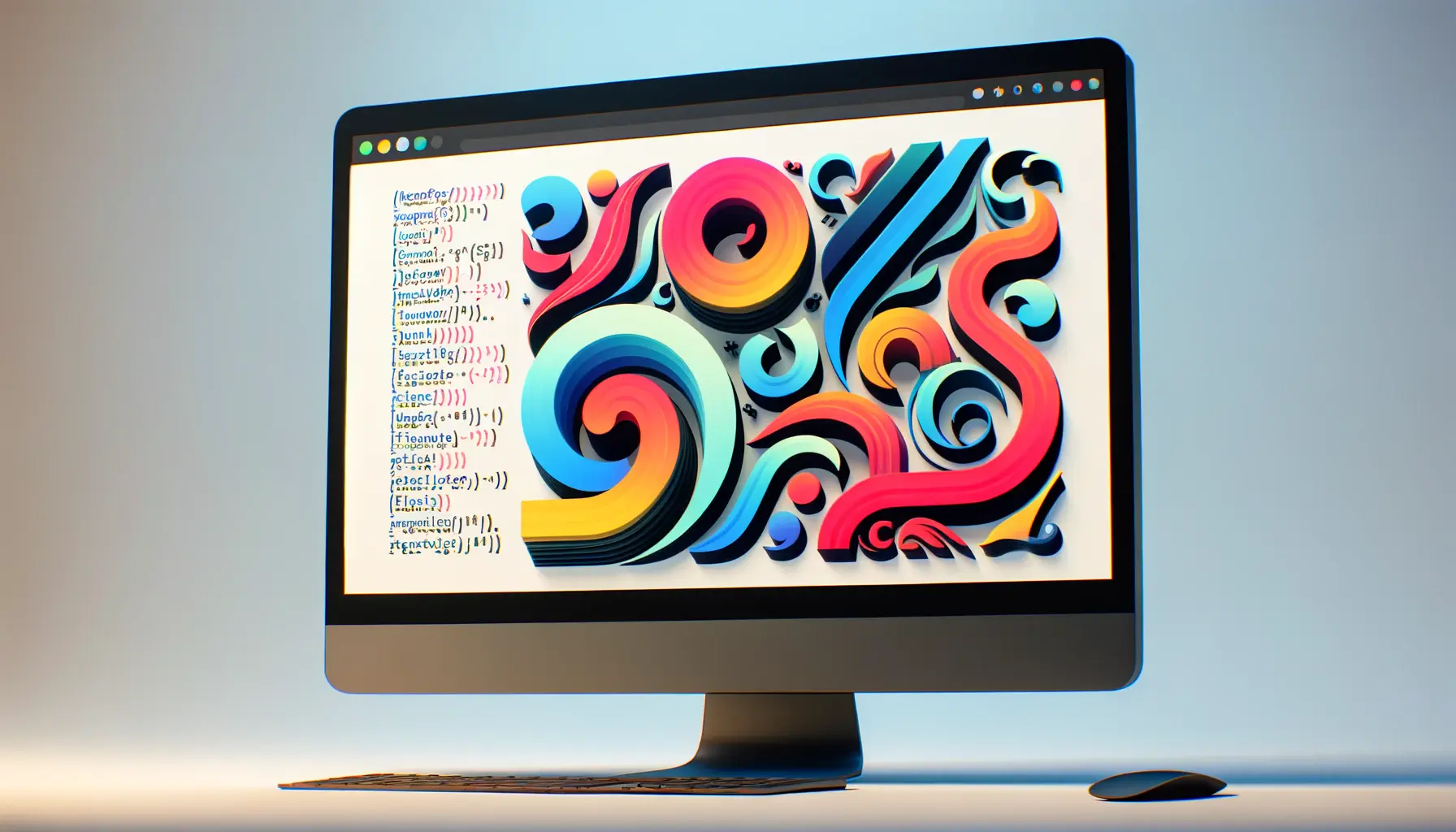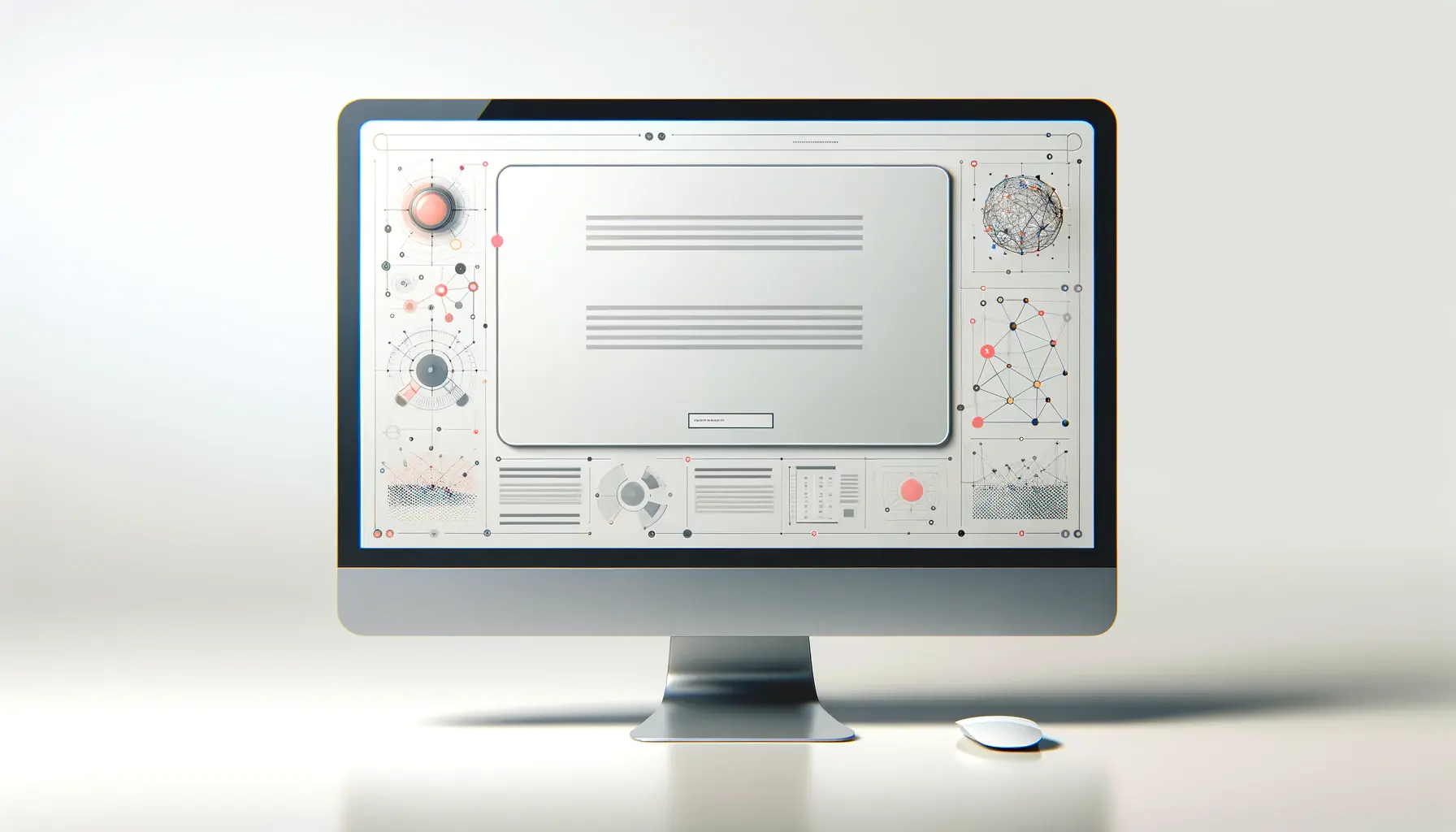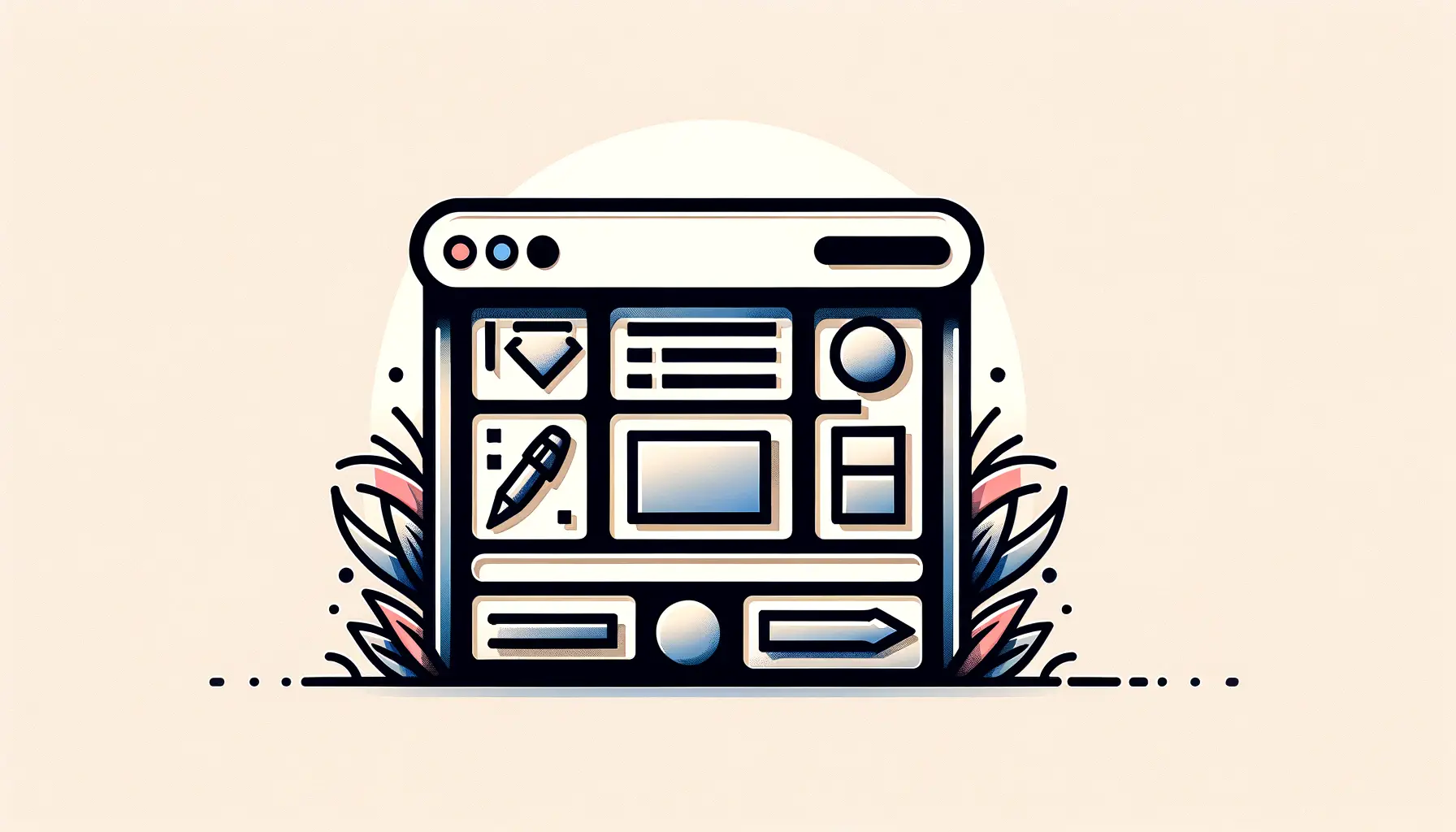The realm of web design has witnessed a remarkable transformation over the years, with typography emerging as a pivotal element in creating visually appealing and user-friendly websites.
The evolution of typography in web design, particularly through the advancements in CSS (Cascading Style Sheets), has enabled designers to craft more expressive and accessible web experiences.
This journey from the rudimentary use of system fonts to the innovative implementation of web fonts and variable typography has significantly influenced how content is presented and perceived on the internet.
Typography, at its core, is the art and technique of arranging type to make written language legible, readable, and appealing when displayed.
The integration of typography into web design involves a nuanced understanding of font selection, typeface design, and text layout, all of which are crucial for enhancing the user’s reading experience.
With the advent of CSS, designers have gained unprecedented control over text appearance, allowing for customization that aligns with the overall design ethos of websites.
This control extends to aspects such as font size, weight, spacing, and color, enabling a level of detail and creativity previously unattainable.
- Historical Overview of Typography in Web Design
- Responsive Typography and User Experience
- Typography and Brand Identity
- Impact of Typography on Readability and Accessibility
- Variable Fonts and the Future of Web Typography
- Typography in Mobile Web Design
- Global Typography Trends and CSS
- Reflecting on the Journey of Typography in Web Design
- Typography in Web Design: FAQs
Historical Overview of Typography in Web Design
The Early Days of Web Typography
In the early stages of the World Wide Web, typography was severely limited by the available technology.
Designers were confined to a handful of “web-safe” fonts, which were essentially fonts that were widely available across different operating systems and browsers.
This limitation stemmed from the need to ensure that text would appear consistently across various user environments.
However, this constraint also stifled creativity and innovation in web design, as the choice of fonts directly impacted the visual diversity and expressiveness of websites.
The introduction of CSS in the late 1990s marked a turning point in web typography.
CSS allowed designers to separate content from presentation, providing the tools to style web pages with greater flexibility.
This separation meant that designers could define the appearance of text independently of its semantic structure, paving the way for more sophisticated design techniques and typographic treatments.
Advent of Web Fonts and CSS Enhancements
The evolution of web typography took a significant leap forward with the introduction of web fonts.
This innovation allowed designers to use custom fonts that were not installed on the user’s system, broadening the typographic palette and enabling a more distinctive and personalized approach to web design.
Services like Google Fonts and Adobe Fonts made a wide range of typefaces readily accessible, fostering creativity and diversity in web typography.
Parallel to the rise of web fonts, CSS continued to evolve, introducing features that further enhanced typographic capabilities on the web.
CSS3, for example, brought new properties such as text-shadow, font-face for embedding custom fonts, and eventually, variable fonts.
These advancements allowed for dynamic typography that could adapt to various screen sizes and resolutions, a critical consideration in the age of responsive design.
The transition from limited, system-based fonts to the rich, diverse typographic landscapes of today’s web is a testament to the power of CSS in transforming web design.
Responsive Typography and User Experience
The concept of responsive web design has revolutionized the way websites are created and interacted with, placing a significant emphasis on the adaptability of web content across various devices.
Typography plays a crucial role in this adaptability, ensuring that text is not only legible and readable on different screen sizes but also contributes to a cohesive user experience.
The evolution of CSS has been instrumental in facilitating responsive typography, offering a suite of properties that enable text to dynamically adjust based on device characteristics.
One of the key aspects of responsive typography is the use of relative units, such as percentages, ems, and rems, for font sizes, line heights, and spacing.
These units ensure that typography scales appropriately, maintaining readability and accessibility regardless of the device used to access the web content.
Additionally, CSS media queries have become a cornerstone of responsive design, allowing designers to apply different typographic styles based on specific conditions, such as screen width or resolution.
- Viewport Width (vw/vh): Utilizing viewport units for typography enables text size to adjust based on the width or height of the viewport, offering a fluid and scalable approach to text sizing.
- Flexible Grids: Incorporating typography into flexible grid layouts ensures that text elements scale in harmony with the overall layout, enhancing the visual balance and readability of the content.
- Media Queries: CSS media queries empower designers to fine-tune typography for different screen sizes, improving legibility and user experience by adjusting font sizes, line spacing, and text alignment based on the viewing environment.
The impact of responsive typography on user experience cannot be overstated.
By ensuring that text is easily readable and aesthetically pleasing across all devices, designers can significantly reduce user frustration and enhance the overall effectiveness of web content.
This approach not only caters to the diverse range of devices and screen sizes but also addresses the varying needs and preferences of users, making web content more accessible and inclusive.
Responsive typography is a testament to the flexibility and power of CSS, enabling designers to create more user-friendly and adaptable web experiences.
Typography and Brand Identity
The strategic use of typography in web design extends beyond aesthetics and functionality; it plays a pivotal role in shaping a brand’s identity and how it is perceived by the audience.
A well-chosen typeface can convey a brand’s personality, values, and tone of voice, creating a memorable impression on users.
CSS provides the tools necessary for implementing brand-specific typography consistently across a website, reinforcing brand identity through visual elements.
Choosing the Right Typeface for Your Brand
Selecting the appropriate typeface is crucial for aligning your website’s typography with your brand identity.
Factors to consider include the typeface’s style, weight, and readability, as well as how well it reflects the brand’s personality.
For instance, a tech company might opt for a clean, sans-serif font to convey modernity and innovation, while a luxury brand might prefer a serif font to evoke elegance and tradition.
Consistency Across All Web Elements
Consistency in typography is key to maintaining a cohesive brand identity across a website.
CSS enables designers to apply uniform typographic styles to all text elements, from headers and body text to buttons and captions.
This consistency ensures that the brand’s visual identity is reinforced at every point of interaction with the user, contributing to a stronger brand presence and recognition.
- Font Stacks: CSS allows for the specification of font stacks, ensuring that a suitable alternative is displayed in case the primary font is not available, without compromising the brand’s visual identity.
- Custom Fonts: The use of @font-face in CSS enables the incorporation of custom fonts, offering brands the opportunity to use unique typefaces that set them apart from competitors.
- Typography Guidelines: Establishing a set of typographic guidelines and implementing them through CSS ensures that all web content aligns with the brand’s identity, enhancing the overall brand experience.
The integration of typography with brand identity through CSS not only enhances the visual appeal of a website but also strengthens the emotional connection between the brand and its audience.
By carefully selecting and consistently applying typefaces that reflect the brand’s essence, companies can leverage typography as a powerful tool for brand storytelling and engagement.
The deliberate choice and consistent application of typography are essential in conveying a brand’s identity and values, making it a critical consideration in web design.
Impact of Typography on Readability and Accessibility
The influence of typography on the readability and accessibility of web content is profound.
Effective typography ensures that text is not only aesthetically pleasing but also easy to read and accessible to a wider audience, including individuals with disabilities.
CSS plays a crucial role in achieving this by providing a range of properties and techniques designed to enhance text readability and web accessibility.
Enhancing Readability through CSS
Readability is determined by how easily and quickly text can be read and understood.
Several CSS properties directly impact readability, including font size, line height, and letter spacing.
For instance, increasing line height (line spacing) can significantly improve text readability by preventing lines of text from appearing too crowded.
Similarly, adjusting letter spacing (tracking) can help in reducing visual clutter, making each character more distinguishable.
Accessibility Considerations in Typography
Accessibility in web design ensures that content is usable by people with various disabilities.
Typography plays a key role in accessibility, with considerations such as font choice, color contrast, and text size being paramount.
CSS offers solutions to these challenges, such as the ability to specify high-contrast color schemes for text and background, ensuring that text is legible for users with visual impairments.
Additionally, the use of relative units for font sizes allows users to adjust text size according to their needs, enhancing the accessibility of web content.
- Color Contrast: Adequate contrast between text and its background is essential for readability, especially for users with low vision. CSS allows designers to specify color values that meet accessibility standards.
- Scalable Units: Using scalable units (e.g., ems, rems) for font sizes enables users to adjust text size through their browser settings, making web content more accessible to individuals with visual impairments.
- Accessible Font Choices: Selecting fonts that are designed for readability, such as those with a larger x-height and open counters, can improve the legibility of text for a broader audience.
By prioritizing readability and accessibility in typography, web designers can create content that is not only visually engaging but also inclusive, ensuring that all users, regardless of their abilities, can enjoy a positive web experience.
The strategic use of CSS to enhance these aspects of typography underscores its importance in creating accessible and user-friendly web designs.
Prioritizing typography’s impact on readability and accessibility is essential for creating inclusive and user-friendly web experiences.
Variable Fonts and the Future of Web Typography
The advent of variable fonts marks a significant milestone in the evolution of web typography, offering unprecedented flexibility and efficiency for web designers and users alike.
Variable fonts are font files that encapsulate multiple variations of a typeface within a single file, allowing for seamless transitions between different weights, widths, and styles.
This innovation, supported by advancements in CSS, is set to redefine the possibilities of typographic design on the web.
Advantages of Variable Fonts
Variable fonts bring a host of benefits to web typography, including reduced load times and enhanced creative possibilities.
By consolidating multiple font variations into a single file, variable fonts minimize the amount of data needed to be transferred over the web, thereby improving page load speeds and performance.
Furthermore, they enable designers to fine-tune typographic styles with precision, adjusting attributes such as weight, width, and slant dynamically through CSS.
Implementing Variable Fonts with CSS
The integration of variable fonts into web design is facilitated by CSS properties that control font variation settings.
The ‘font-variation-settings’ property, for example, allows designers to specify the exact variation of the font to be displayed, offering a level of control that was previously unattainable.
This capability not only enhances the aesthetic appeal of web typography but also contributes to more responsive and adaptable designs.
- Performance Optimization: By reducing the number of font files required, variable fonts contribute to faster page load times, enhancing the overall user experience.
- Creative Flexibility: Designers can leverage the dynamic nature of variable fonts to create engaging and interactive typographic experiences, adapting the typography to match the user’s interaction or the context of the content.
- Responsive Design: Variable fonts align perfectly with the principles of responsive design, allowing typography to adapt seamlessly across different screen sizes and resolutions without compromising quality or legibility.
The potential of variable fonts in web design is vast, promising a future where typography is not only more efficient and flexible but also more expressive and tailored to the user’s needs.
As CSS continues to evolve, the integration of variable fonts will undoubtedly play a pivotal role in shaping the next generation of web typography, making it more dynamic, accessible, and engaging.
Variable fonts represent a leap forward in web typography, offering efficiency, flexibility, and creative potential that aligns with the future of web design.
Typography in Mobile Web Design
As mobile devices increasingly become the primary means of accessing the internet, the importance of typography in mobile web design has never been more pronounced.
The unique challenges presented by smaller screens, such as limited space and varied viewing conditions, require a thoughtful approach to typography to ensure content is accessible, readable, and engaging.
CSS plays a crucial role in adapting typography to meet the demands of mobile web design, offering a range of techniques to optimize text for mobile users.
Optimizing Typography for Smaller Screens
Optimizing typography for mobile devices involves adjusting font sizes, line heights, and spacing to improve readability on smaller screens.
CSS provides the flexibility to tailor typography to the mobile context, using media queries to apply different styles based on screen size and orientation.
This adaptability ensures that text remains legible and accessible, regardless of the device used to view the content.
Enhancing Mobile User Experience with Typography
Beyond readability, typography also plays a vital role in enhancing the overall user experience on mobile devices.
The choice of typeface, the contrast between text and background, and the spacing between lines and letters can all influence how users perceive and interact with mobile web content.
By leveraging CSS to refine these typographic elements, designers can create mobile web experiences that are not only easy to read but also visually appealing and user-friendly.
- Scalable Typography: Employing relative units (e.g., ems, rems, vw) for font sizes ensures that typography scales effectively across different screen sizes, maintaining readability and aesthetic appeal.
- Readable Font Sizes: Adjusting font sizes for mobile readability, taking into consideration the typical viewing distance and screen size of mobile devices.
- Touch-Friendly Interfaces: Considering the touch interface of mobile devices, typography must be designed to facilitate easy interaction, with adequate spacing for tap targets and clear, legible labels for buttons and links.
The integration of responsive typography techniques in mobile web design is essential for creating content that is both accessible and engaging for mobile users.
As the web continues to evolve, the role of CSS in shaping mobile typography will remain a key factor in delivering superior mobile web experiences.
Neglecting typography in mobile web design can lead to poor user experiences, underscoring the importance of adapting typographic practices for mobile contexts.
Global Typography Trends and CSS
The landscape of web typography is continually evolving, influenced by technological advancements, cultural shifts, and global design trends.
Keeping abreast of these trends is crucial for web designers aiming to create relevant, impactful, and engaging web experiences.
CSS, with its ever-expanding toolkit, enables designers to implement these global typography trends, ensuring that web designs remain at the forefront of digital innovation.
Embracing Diversity in Typography
One significant trend in web typography is the move towards greater diversity and inclusivity in typeface choices.
This includes the adoption of non-Latin scripts, variable fonts that accommodate different languages, and typefaces that reflect a wide range of cultural identities.
CSS supports this diversity by facilitating the use of a broad spectrum of fonts, enabling designers to create more inclusive and globally accessible web content.
Innovative Typographic Layouts
Another trend is the exploration of innovative typographic layouts that break free from traditional grid systems.
Designers are experimenting with overlapping elements, variable text sizes, and dynamic compositions to create visually striking and interactive experiences.
CSS grid and flexbox layouts offer the flexibility and control needed to bring these creative visions to life, pushing the boundaries of what can be achieved with web typography.
- Experimental Typefaces: The use of bold, experimental typefaces to capture attention and express brand personality is on the rise, supported by CSS’s ability to integrate custom fonts seamlessly.
- Dynamic Typography: The integration of animation and interactivity into typography, using CSS animations and transitions, adds a new dimension to web content, engaging users in unique ways.
- Accessibility and Readability: Despite the push for innovation, the focus on accessibility and readability remains paramount, with CSS providing the tools to ensure that typographic designs are inclusive and user-friendly.
The future of web typography is vibrant and diverse, shaped by global trends and the creative possibilities unlocked by CSS.
As designers continue to explore new horizons in typography, CSS will remain an indispensable ally, enabling the realization of visionary typographic projects that enhance the web’s visual and interactive landscape.
Staying attuned to global typography trends and leveraging CSS’s capabilities are key to creating contemporary and compelling web designs.
Reflecting on the Journey of Typography in Web Design
The evolution of typography in web design, particularly through the lens of CSS, is a testament to the dynamic and innovative spirit of the digital design community.
From the early days of limited, system-based fonts to the current era of variable fonts and beyond, typography has continually adapted to meet the changing needs and expectations of users and designers alike.
This journey not only highlights the technical advancements in web design but also underscores the importance of typography as a fundamental element that shapes the user experience.
The Role of CSS in Shaping Modern Typography
CSS has been instrumental in this evolution, providing designers with the tools and flexibility needed to experiment with and implement creative typographic solutions.
The introduction of features such as custom fonts, variable fonts, and responsive design capabilities has opened up new possibilities for expressing brand identity, enhancing readability, and ensuring accessibility.
As CSS continues to evolve, it will undoubtedly usher in new typographic innovations, further enriching the web’s visual and interactive landscape.
Looking Ahead: The Future of Typography in Web Design
The future of typography in web design is poised for continued innovation, driven by advancements in technology, shifts in design trends, and the growing emphasis on inclusivity and accessibility.
As we look ahead, several key themes are likely to shape the trajectory of typography:
- Increased adoption of variable fonts, offering greater efficiency and creative flexibility.
- A stronger focus on inclusive and accessible design practices, ensuring that web content is usable by a diverse audience.
- The exploration of new typographic layouts and interactive elements, challenging traditional design conventions and engaging users in novel ways.
In conclusion, the evolution of typography in web design, facilitated by CSS, reflects a broader narrative of innovation and adaptation.
As designers continue to push the boundaries of what’s possible, typography will remain at the heart of this creative exploration, shaping how content is experienced on the web.
The journey of typography is far from over, and its future promises to be as dynamic and impactful as its past.
Quality web design is key for a great website! Check out our service page to partner with an expert web design agency.
Typography in Web Design: FAQs
Explore common questions about integrating typography with CSS in web design to enhance your projects.
Typography enhances readability, user experience, and conveys brand identity, making it crucial for effective web design.
Limit to 2-3 typefaces to maintain a cohesive look and ensure readability across your website.
Use sans serif fonts for body text due to their readability on digital screens, saving serif fonts for headings.
CSS offers control over font properties, enabling responsive and adaptable typography that enhances user experience.
Variable fonts contain multiple variations within one file, reducing load times and offering design flexibility.
Typography reflects a brand’s personality and values, significantly affecting user perception and brand recognition.
Focus on readability with scalable fonts, adequate spacing, and responsive design to enhance mobile user experience.
Use high-contrast colors, legible font sizes, and inclusive design practices to make web content accessible to all.













